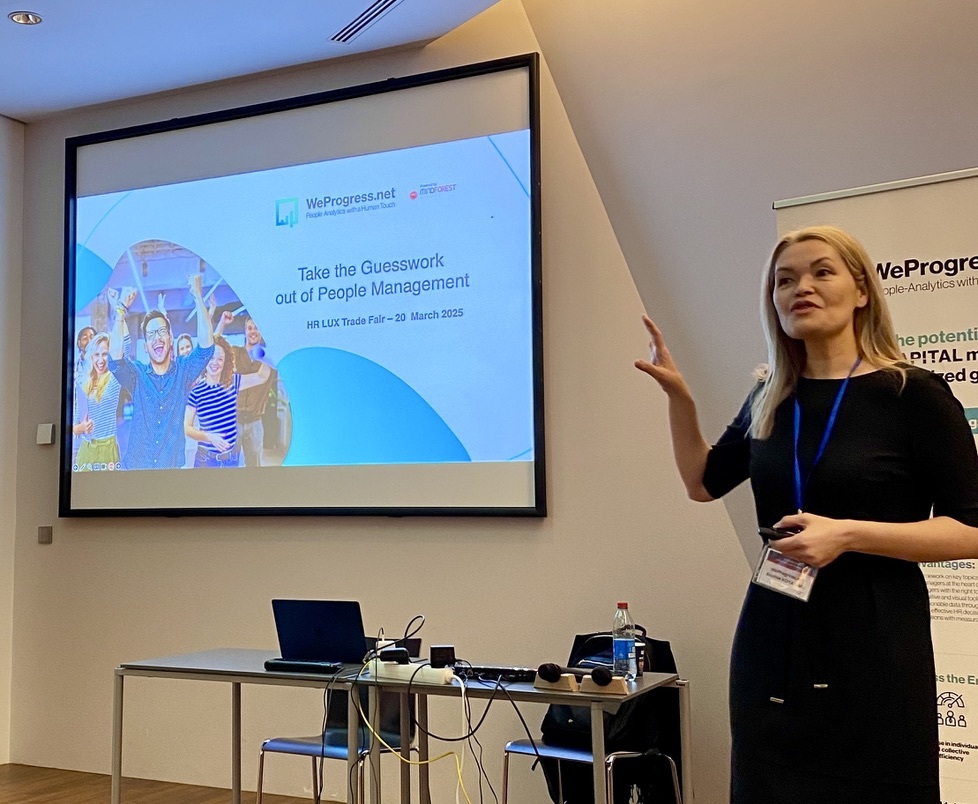The 5 roles of internal communication in a change management context
Role n°1 of internal communication: don’t let the project fail
Teams need to be perfectly prepared, coordinated and informed. They need to share, understand and adhere to the strategic, operational, organisational and cultural vision of the joint project.
This is the result of internal communication measures, of exchanges that take place between top management and the teams, between managers and with their colleagues. Indeed, interaction is the essential prerequisite for the circulation of information.
Let’s do something to counteract the McKinsey figure that predicts a 70% failure rate for corporate transformation objectives by making the most of internal communication as a success factor that must be activated.
Role n°2: make sure you take a holistic approach to all change factors
Communication in a change management context must answer all the main questions asked by employees. Every aspect of the change project must be approached: by putting the benefits for the company and the employees into perspective and by outlining the prospects for each individual.
In the course of this exercise, every employee should obtain answers to his or her own questions:
- What is my company’s vision and ambition?
- How are we progressing?
- What is my contribution and that of my team?
- How will we contribute at my site?
- How does my function contribute?
Internal communication must ensure that all the factors of change are integrated into its key messages and editorial content in the broadest sense.
The first step is to identify them in advance and assess their impact for each project and each team. They can then be adopted according to specific needs.
Change drivers:
- Practices (how work is done)
- Working conditions (environment and materials)
- Tools (IT and management)
- Organisation (decision-making attribution and functional restrictions)
- Professional skills (company know-how)
- Strategy (planned and executed objectives)
- Culture (value system)
Since change has a strong emotional dimension, internal communication must find the right levers to transmit energy and give credibility to the change while underlining the support of the company’s top management.
Role n°3: keep all the managers on board
But to be convincing, they first have to be convinced.
Hence the absolute necessity to get them on board as early as possible, and if possible to involve them in the development of the transformation project.
It is therefore a question of making the most of your communication strategy with regard to change. Every manager must be able to answer all his/her team’s questions. To do this, (s)he must have a clear vision of the future strategy thanks to dedicated management meetings, a communication kit including key messages or perhaps a question and answer guide.
The best way to make them real actors of change, is to involve them in working groups or even to train them in facilitation methods, so that they themselves lead and create the change.
The manager will be present throughout the process. His or her own managerial communication must adapt and take into account the changes (s)he must address with his or her teams during regular meetings or individual interviews. (S)He must also be able to consider the benefits of regular feedback meetings, which allow everyone to express their doubts, to point out the benefits and, above all, to find solutions in the event of any malfunctions. Regular and transparent two-way communication about project progress and the difficulties or doubts encountered will ensure an indispensable link between management and the teams in the field.
Role n°4: Don’t leave anyone behind…
The perception of change is very personal. Each individual sees it in a more or less positive way. This may depend on a number of factors such as their professional situation, their relationship with their manager or their confidence in the company. The levers will therefore vary and will have to be adapted to the perceived resistance.
This analysis must therefore take place very early on in the change project and continue throughout the process, because resistance evolves according to project progress and the pace of the individuals involved.
This is the context where MindForest applies the principles of the “ICAP” curve described below (role n°5).
Internal communication must therefore adapt its messages and techniques to suit each phase of the change and become anchored in the reality of the project.
The more concrete, transparent and illustrated the messages, the more transparent the communication will be and the more people it will reach.
And of course, let’s not forget the key to all good pedagogy: repeating important messages.
Role n°5: Take a professional approach to internal communication
Communication in a change management context is based on the methodology of the communication plan. Like the project plan, the communication plan sets the course for the organisation or the project team in terms of objectives, expectations, expected results and individual roles. The main planned communication measures will make it possible to communicate at the right time, neither too early nor too late, but also make it easier to react to unforeseen events when you need crisis communication.
HOW SHOULD YOU CONSTRUCT YOUR PLAN?
It should at least include these 10 steps and be conceived in a collaborative way with the project teams and as many stakeholders as possible.
- Clearly define the change and the vision for the future
- Assess all factors related to the change
- Analyse all relevant stakeholders
- Consider changes in daily operations
- Define key message
- Create inspiring and motivating internal content
- Build an editorial, managerial and event communication calendar
- Define and understand the different internal audiences
- Choose the right communication channels needed to reach the right employees at the right time
- Measure the impact of your communication actions.
At MindForest, we use the “ICAP” methodology: Inform, Comprehend, Accept, Participate to guide us in the adoption of change. Each stage generates stakeholder involvement, an action plan and uses specific communication channels.
- During the information phase, we discuss the context, aims and modalities of the project
- During the comprehension phase, we describe the potential risks, benefits and implications at collective and individual level
- During the acceptance phase we rely on the use of specific communication methods to relay information, convince and conduct training
- Finally, during the participation phase we measure contribution levels, assess to what extent new methods have been assimilated into the process of “business as usual” and what potential remains.
Internal communication acts as a driver for involvement and exchange. People will only accept a change if they are in direct contact with it.
"By asking questions, challenging the objectives or the methods and debating the pros and cons teams become stakeholders in the transformation project and actors of change."
Nathalie Hebert, Senior change communication consultant
Let us help you!
[1] Header photo by Austin Distel on Unsplash
WANT TO RECEIVE OUR LATEST THOUGHT LEADERSHIP CONTENT?
Related posts
 Take the Guesswork out of People Management
Take the Guesswork out of People Management
 From processes to people: achieving quality
From processes to people: achieving quality
 Daring to lead Positive Transformation: What if Positive Emotional Capital was your key to sustainable change?
Daring to lead Positive Transformation: What if Positive Emotional Capital was your key to sustainable change?
 Why hire Change management professionals? We can do it alone!
Why hire Change management professionals? We can do it alone!
 Digital Transformation and Change Management: Lessons shared in an event hosted by Cebi and MindForest
Digital Transformation and Change Management: Lessons shared in an event hosted by Cebi and MindForest



